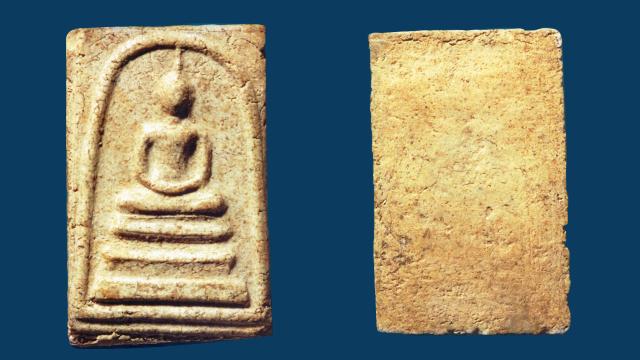แนะนำ/ศึกษา วัตถุมงคล
สมเด็จพระพุฒาจารย์ (โต พฺรหฺมรํสี)
วัดระฆัง
สมเด็จพระพุฒาจารย์ (โต พฺรหฺมรํสี) (นามเดิม: โต) หรือนามที่นิยมเรียก "สมเด็จโต" "หลวงปู่โต" หรือ "สมเด็จวัดระฆัง" เป็นพระภิกษุมหานิกาย เป็นพระมหาเถระรูปสำคัญที่ได้รับความนิยมนับถืออย่างมากในประเทศไทย ท่านเคยดำรงตำแหน่งเจ้าอาวาสวัดระฆังโฆสิตารามวรมหาวิหารในสมัยรัชกาลที่ 4-5
สมเด็จพระพุฒาจารย์ (โต พฺรหฺมรํสี) นับเป็นพระเกจิเถราจารย์ผู้มีปฏิปทาจริยาวัตรน่าเลื่อมใส เป็นที่เคารพนับถือทั่วไปมาตั้งแต่ท่านยังมีชีวิตอยู่ ตั้งแต่พระมหากษัตริย์จนถึงสามัญชน[1] และนอกจากจริยาวัตรด้านความสมถะอันโดดเด่นของท่านแล้ว ท่านยังทรงคุณทางด้านวิชชาคาถาอาคม เมตตามหานิยม โดยเฉพาะอย่างยิ่งวัตถุมงคล "พระสมเด็จ" ที่ท่านได้สร้างขึ้นเพื่อเป็นพุทธบูชา ได้ถูกจัดเข้าในพระเครื่องเบญจภาคี หรือสุดยอดของพระเครื่องวัตถุมงคล 1 ใน 5 ของประเทศไทย[2] และมีราคาซื้อขายในปัจจุบันต่อองค์เป็นราคานับล้านบาท[3] ด้วยปฏิปทาจริยาวัตรและคุณวิเศษอัศจรรย์ของท่าน ทำให้พุทธศาสนิกชนชาวไทยเคารพนับถือว่าท่านเป็นอมตะเถราจารย์รูปหนึ่งของเมืองไทย และมีผู้นับถือจำนวนมากในปัจจุบัน
Somdet To (1788–1872; B.E. 2331–2415), known formally as Somdet Phra Buddhacarya (To Brahmaramsi) (Thai: สมเด็จพระพุฒาจารย์ (โต พฺรหฺมรํสี); RTGS: Somdet Phra Phutthachan (To Phrommarangsi)), was one of the most famous Buddhist monks during Thailand's Rattanakosin period and continues to be the most widely known saintly monk in Thailand.[1] He is revered for spiritual powers and his amulets are sought after.[2] His images and statues are some of the most popular religious icons in Bangkok.[3]
Somdet To was born in Phra Nakhon Si Ayutthaya Province, the illegitimate son of King Rama II.[4] He studied the Buddhist scriptures of the Pāli Canon with several Buddhist masters. After becoming a well-known monk, he became the preceptor for Prince Mongkut, later King Rama IV, when Mongkut became a monk. During Rama IV's reign Somdet To was given the ceremonial name Somdet Phra Buddhacarya (To Brahmaramsi – Buddh[a]charya meaning teacher (acharya) of Buddhism) by the King and used to be one of his trusted advisers, having left a lot of teaching stories around him and the King.[5]
He was noted for the skill of his preaching and his use of Thai poetry to reflect the beauty of Buddhism, and for making amulets called Somdej. The amulets were blessed by himself and other respected monks in Thailand. He also appears in many versions of the story of the ghost Mae Nak Phra Khanong, and he is said to be the one to finally subdue her. Somdet To also wrote the Jinapanjara, a protective magical incantation which is widely chanted and used by Thais.[6]

พระสมเด็จ วัดระฆัง พิมพ์ใหญ่
พระสมเด็จ วัดระฆัง พิมพ์ฐานแซม